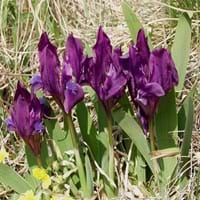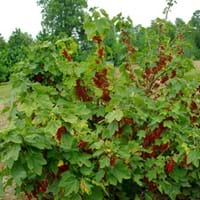Life Span
Perennial
Perennial
Origin
Eastern Europe
Europe, Central Asia, Western Asia
Types
Not Available
Rovada, ‘Red Lake’ AGM, Junifer
Habitat
Terrestrial
Broad-Leaved Forests, shores, Stream side
USDA Hardiness Zone
4-9
3-8
Sunset Zone
1a, 1b, 2a, 2b, 3a, 3b, 4, 5, 6, 7, 8, 9, 10, 11, 12, 13, 14, 15, 16, 17, 18, 19, 20, 21, 22, 23, 24
Not Available
Habit
Clump-Forming
Upright/Erect
Flower Color
Yellow, Lavender, Blue Violet
Green
Flower Color Modifier
Bicolor
Bicolor
Fruit Color
Not Available
White, Red, Pink, Ivory
Leaf Color in Spring
Green, Sea Green
Green
Leaf Color in Summer
Green, Sea Green
Green
Leaf Color in Fall
Green, Sea Green
Yellow, Green
Leaf Color in Winter
Light Green
Light Green
Leaf Shape
Lanceolate
Maple shaped
Plant Season
Spring, Summer
Summer
Sunlight
Full Sun, Partial Sun
Full Sun, Partial Sun, Partial shade
Growth Rate
Medium
Medium
Type of Soil
Loam, Sand
Loam
The pH of Soil
Neutral
Acidic, Neutral
Soil Drainage
Well drained
Well drained
Bloom Time
Spring, Late Spring, Early Summer
Early Spring, Spring
Tolerances
Drought
Drought
Where to Plant?
Ground
Container, Ground, Pot
How to Plant?
By dividing rhizomes, tubers, Seedlings
Divison, Seedlings
Plant Maintenance
Medium
Medium
Watering Requirements
Average Water Needs, Do Not over Water
occasional watering once established, Requires watering in the growing season
In Summer
Lots of watering
Lots of watering
In Spring
Moderate
Moderate
In Winter
Average Water
Average Water
Soil pH
Neutral
Acidic, Neutral
Soil Type
Loam, Sand
Loam
Soil Drainage Capacity
Well drained
Well drained
Sun Exposure
Full Sun, Partial Sun
Full Sun, Partial Sun, Partial shade
Pruning
Remove damaged leaves, Remove dead branches, Remove dead leaves
Prune every year, Prune to half of its height, Prune to stimulate growth
Fertilizers
All-Purpose Liquid Fertilizer
Citrus, Fertilize every year
Pests and Diseases
Red blotch
Aphids, Birds, Borers, Red blotch
Plant Tolerance
Drought
Drought
Flower Petal Number
Single
Single
Foliage Texture
Coarse
Medium
Foliage Sheen
Matte
Not Available
Attracts
Hummingbirds
Birds
Allergy
Skin irritation
Asthma
Aesthetic Uses
Showy Purposes
Showy Purposes
Beauty Benefits
Not Available
Not Available
Environmental Uses
Air purification
Not Available
Medicinal Uses
No Medicinal Use
Iron, Phosphorus, Vitamin B, Vitamin C
Part of Plant Used
Not Available
Fruits, Whole plant
Other Uses
Used as Ornamental plant
Culinary use, Used As Food, Used as Ornamental plant
Used As Indoor Plant
No
Yes
Used As Outdoor Plant
Yes
Yes
Garden Design
Alpine, Edging, Mixed Border, Rock Garden, Wall
Edible, Fruit / Fruit Tree, Hedges, Mixed Border
Botanical Name
IRIS pumila
RIBES rubrum
Common Name
Dwarf Iris
Red Currant
In Hindi
Dwarf Iris
Red Currant
In German
Zwergiris
Rote Johannisbeere
In French
Dwarf Iris
Groseille
In Spanish
Enano Iris
Grosella
In Greek
νάνος Ίρις
Κόκκινη σταφίδα
In Portuguese
Dwarf Iris
Groselha
In Polish
Dwarf Iris
Porzeczkowy
In Latin
Iris Dwarf
red RIBES
Phylum
Magnoliophyta
Magnoliophyta
Class
Liliopsida
Magnoliopsida
Family
Iridaceae
Grossulariaceae
Clade
Angiosperms, Monocots
Angiosperms, Core eudicots, Eudicots
Tribe
Irideae
Not Available
Subfamily
Iridoideae
Not Available
Number of Species
Not Available
Not Available
Properties of Dwarf Iris and Red Currant
Wondering what are the properties of Dwarf Iris and Red Currant? We provide you with everything About Dwarf Iris and Red Currant. Dwarf Iris doesn't have thorns and Red Currant doesn't have thorns. Also Dwarf Iris does not have fragrant flowers. Dwarf Iris has allergic reactions like Skin irritation and Red Currant has allergic reactions like Skin irritation. Compare all the properties and characteristics of these two plants. Find out which of these plant can be used as indoor plant. If you are interested to decorate your house and garden, find out aesthetic uses, compare them and select the plant which will beautify your surrounding. Along with beautification, try comparing medicinal and edible uses of Dwarf Iris and Red Currant and you can choose the plant having best and most benefits.
Season and Care of Dwarf Iris and Red Currant
Season and care of Dwarf Iris and Red Currant is important to know. While considering everything about Dwarf Iris and Red Currant Care, growing season is an essential factor. Dwarf Iris season is Spring and Summer and Red Currant season is Spring and Summer. The type of soil for Dwarf Iris is Loam, Sand and for Red Currant is Loam while the PH of soil for Dwarf Iris is Neutral and for Red Currant is Acidic, Neutral.
Dwarf Iris and Red Currant Physical Information
Dwarf Iris and Red Currant physical information is very important for comparison. Dwarf Iris height is 10.20 cm and width 15.20 cm whereas Red Currant height is 120.00 cm and width 120.00 cm. The color specification of Dwarf Iris and Red Currant are as follows:
Dwarf Iris flower color: Yellow, Lavender and Blue Violet
Dwarf Iris leaf color: Green and Sea Green
Red Currant flower color: Green
- Red Currant leaf color: Green
Care of Dwarf Iris and Red Currant
Care of Dwarf Iris and Red Currant include pruning, fertilizers, watering etc. Dwarf Iris pruning is done Remove damaged leaves, Remove dead branches and Remove dead leaves and Red Currant pruning is done Prune every year, Prune to half of its height and Prune to stimulate growth. In summer Dwarf Iris needs Lots of watering and in winter, it needs Average Water. Whereas, in summer Red Currant needs Lots of watering and in winter, it needs Average Water.





